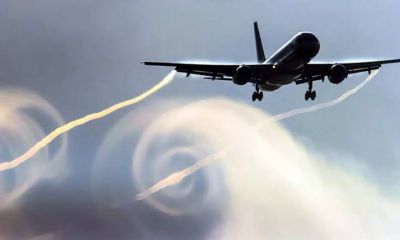Erika Fernandez
To avoid accidental injury, the captain turns on the signal "Fasten your seat belts." In case of moderate turbulence, we will also ask for seats and flight attendants. Severe turbulence is the only category of turbulence that can be considered dangerous, as pilots might temporarily lose control of the machine.
The Plane Isn't Going to Crash
Planes are built to withstand most turbulence. And in the case of more extreme turbulence, which would ideally be navigated around, your pilot is able to bring down the plane's speed to a safe velocity, so your plane won't be damaged it passes through the disturbances.
But there are far fewer turbulence related incidents than you might think. According to data from America's Federal Aviation Administration (FAA), the number of injuries has averaged 33 per year over the last 16 years – in 2017 there were just 17.
As you know clouds consist of tiny water droplets hence they tend to be cooler than the air around it. So whenever an aircraft passes through a cloud the air speed, density and air flow differ greatly than outside the cloud. This change interacts with the wing and creates the shaking effect.
Across the history of aircraft flight around the world planes have been damaged and even broken up when encountering severe thunderstorm clouds in-flight. Some clouds such as the cumulonimbus are definitely a direct danger to aircraft; some clouds simply indicate a potential problem and others have no effect at all.
